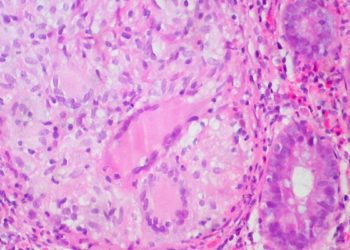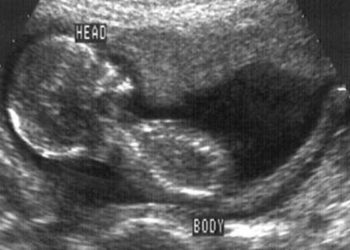Combination treatment with calcineurin inhibitors and IL-2 enhances transplant survival [PreClinical]
1. Blood from liver transplant patients treated with a calcineurin inhibitor (CNI) showed increased levels of apoptotic regulatory T cells (Tregs) and lower IL-2 levels.
2. In mice that received skin allografts, combined treatment of a CNI and IL-2 enhanced transplant survival.
Evidence Rating Level: 2 (Good)
Study Rundown: CNIs are currently used to reduce organ transplant rejection and act by suppressing immune cell activation. Despite the effectiveness of this therapy, it is known to reduce levels of Tregs, an immune cell subset involved in suppressing effector T cell responses. Through evaluating the mechanism leading to decreased Tregs, the researchers in this study aimed to revert this effect to increase immunosuppression and reduce transplant rejection.
Liver transplant patients receiving the CNI tacrolimus.were found to have a decrease in Tregs compared to healthy controls as well as an increase in activated Tregs undergoing apoptosis. These patients were also found to have a decrease in circulating IL-2. When blood samples from patients were treated in vitro with tacrolimus and IL-2, there was an increase in Treg frequency and decreased apoptosis. When tested in a skin allograft mouse model, the combination therapy of tacrolimus and IL-2 led to an increase in Treg cell number, as well as significantly increased allograft survival.
The administration of IL-2 in conjunction with CNI therapy was found to enhance immunosuppression and graft acceptance. Since low-dose IL-2 therapy is currently used clinically, its safety has been characterized. Although the safety and efficacy of this combination therapy still needs to be assessed in humans, this study demonstrates its potential as an immunosuppression therapy for transplant recipients.
Click here to read the study in PNAS
Relevant Reading: Calcineurin inhibitors and immunosuppression – a tale of two isoforms
In-Depth [animal study]: Blood samples were obtained from liver transplant patients receiving tacrolimus and age-matched healthy individuals. Flow cytometry revealed a lower frequency of CD4+CD25+FOXP3+ Tregs (p< 0.0001) in patient samples. Samples from liver transplant patients also showed higher levels of Tregs undergoing apoptosis, as measured by the marker annexin V (p<0.0001). An ELISA was then used to evaluate IL-2 levels in the serum of transplant patients, and showed that levels were significantly decreased (p<0.05). When blood cells from transplant patients were treated with clinically relevant concentrations of tacrolimus and recombinant IL-2 (rIL-2), the reduction in Treg numbers and increase in Treg apoptosis were reversed (p<0.001).
After mice were treated with tacrolimus, with or without the addition of IL-2, a whole genome microarray was used to evaluate gene transcriptional differences. This analysis showed that tacrolimus reduced the expression of genes essential for Treg function. With the addition of IL-2, however, there were few changes in the expression of Treg functional genes compared to control.
Finally, to determine whether IL-2 improves graft acceptance, B6 mice were transplanted with skin grafts from BALB/c mice. The combination therapy of tacrolimus and IL-2 was found to significantly increase the survival of the skin graft, whether IL-2 was administered initially with tacrolimus or at the end of tacrolimus treatment (p<0.05). Combination treatment increased Treg frequency in the blood, lymph nodes, and allografts of these mice (p< 0.001).
Image: PD
©2017 2 Minute Medicine, Inc. All rights reserved. No works may be reproduced without expressed written consent from 2 Minute Medicine, Inc. Inquire about licensing here. No article should be construed as medical advice and is not intended as such by the authors or by 2 Minute Medicine, Inc.





![Metformin treats Fragile X syndrome symptoms in mice [PreClinical]](https://www.2minutemedicine.com/wp-content/uploads/2017/07/Metformin_500mg_Tablets-75x75.jpg)

